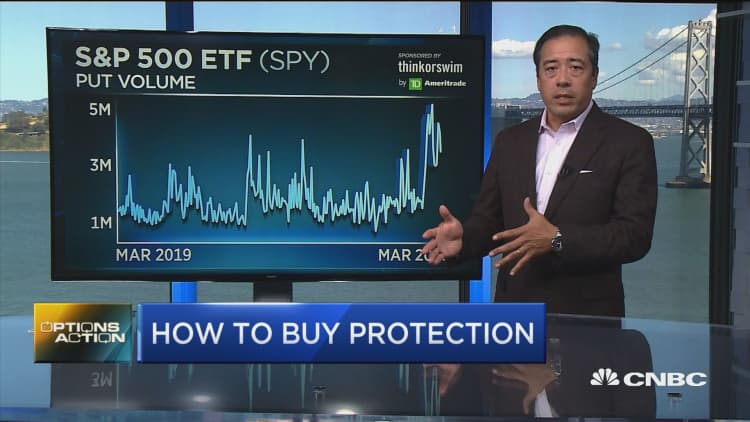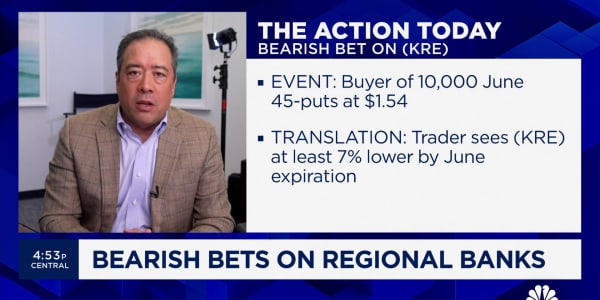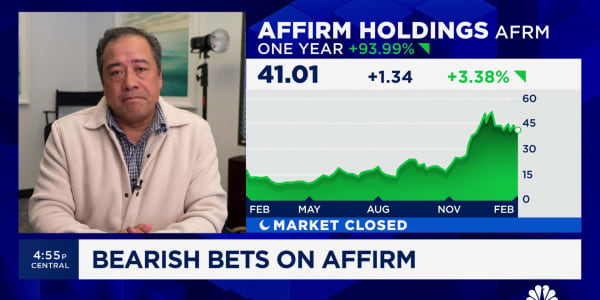
Just about a month after hitting brand new all-time highs, the S&P 500 is in bear market territory as the ongoing coronavirus outbreak wreaks havoc on the markets.
No part of the market remains unscathed at this point, and if you find yourself paralyzed by the wild swings in equities over the last few weeks, you aren't alone. However, there is a way to gauge where traders believe stocks may be heading next by looking at the options market.
"We've seen what has happened, but options are really bets on what is going to happen, so we can actually look at options prices as well as individual options flows to get a sense — essentially the wisdom of crowds — what is it telling us about what the next 30, 60 or 90 days might look like," Optimize Advisors President Michael Khouw said Wednesday on "Fast Money."
Right now, the betting is overwhelmingly bearish, and as Khouw pointed out, put volume in the S&P 500 ETF (SPY) has basically tripled since January.
In addition to the rapid increase in options trading volume, the price of options is also trending materially higher as market volatility reaches its highest levels since the 2008 financial disaster.
"If we take a look at the straddle, for example, going out to June, that was nearly $50 in SPY, and what that basically is telling us is that the implied market move is going to be something in the neighborhood of 17% [in either direction] over the course of the next three months or so," said Khouw.
However, the absolute magnitude that the options market is predicting the SPY may move by June expiration isn't the only thing we can glean from the price of this trade. As Khouw would explain, we can also find out which of the two directional moves is more likely.
"Right now, the options market is saying there's maybe a 5% chance, or lower, that we get back to those February highs by June," said Khouw. "On the other hand, the chances that we decline by about 17% and end up there as of June, that's about 20%.
"So, what you can see is that there is basically a four times greater chance of that downside move than the upside move, as far as the options market is concerned."
The S&P 500 ETF was trading about 7% lower in Thursday's session.





